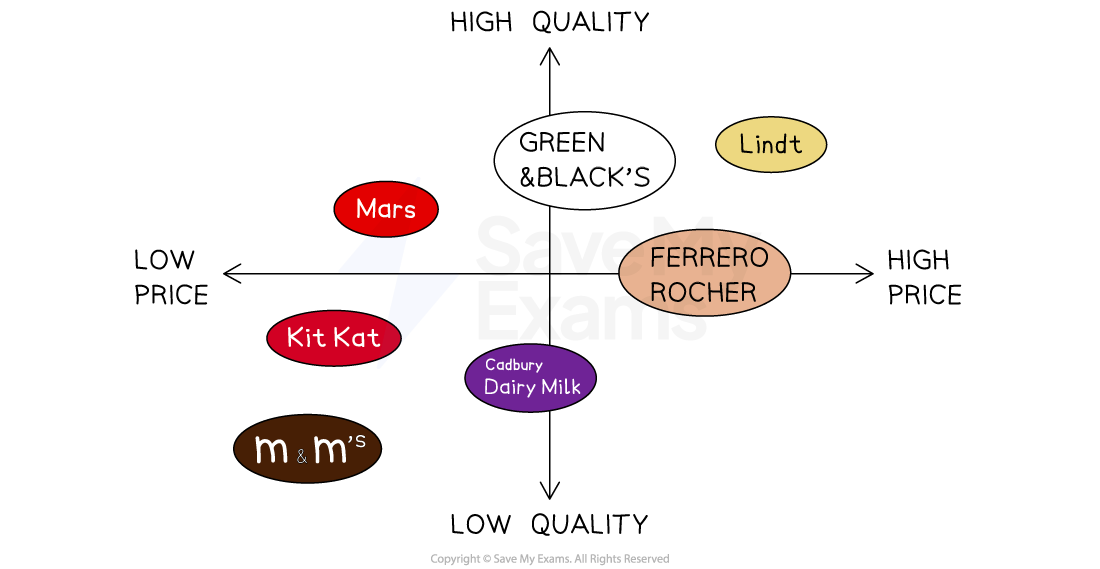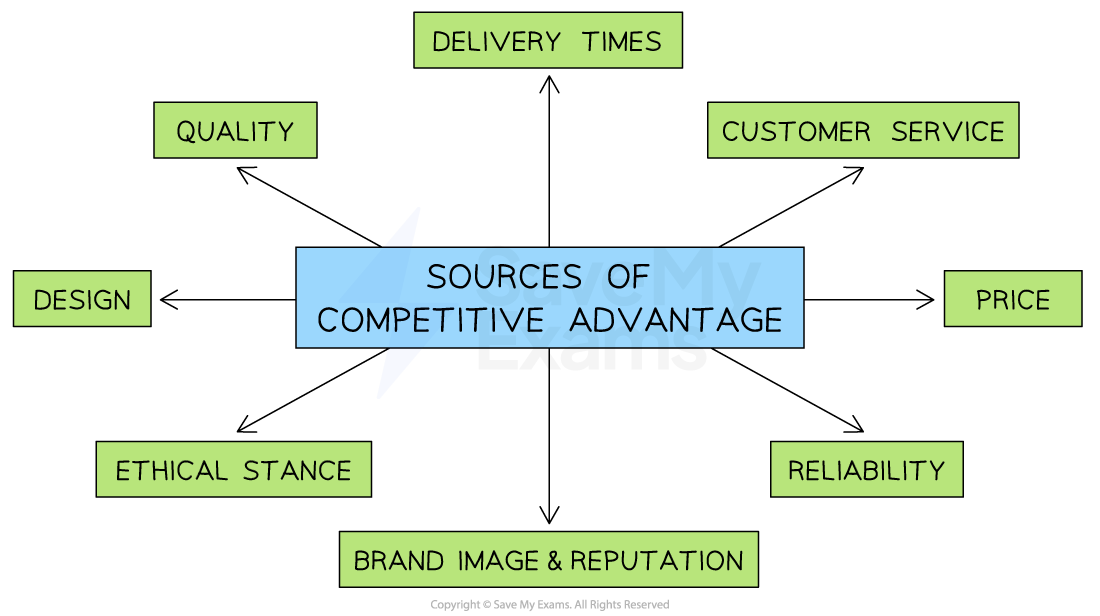Market Positioning & Market Mapping
- Market positioning refers to the process a business goes through when launching a new product or service
- The business decides where they want to position the product in the market with regard to price, quality, branding, and customer perception
- The business decides where they want to position the product in the market with regard to price, quality, branding, and customer perception
- Market mapping is a tool for identifying the position of a product within a market
- A market map refers to a two-dimensional diagram that shows the attributes or characteristics of a product in comparison to rivals’ products
- Only two criteria can be chosen e.g. price and quality, age and income, etc.

M&M has positioned itself as low price and low quality in this example of a market map
Market Map Analysis
- If there were no spaces left on the market map, it indicates that the market is saturated
- This means that there are no opportunities to exploit a market niche in the market
- Competition is likely to be high and profits low
- However, the existence of a space on the market map may indicate the existence of a market niche
- This needs to be researched carefully before the business commits e.g. it looks like there is a gap in the market in high price / low quality area in the map above
- This gap does not represent a worthwhile market as the business would find it impossible to build and maintain a loyal customer base
The Usefulness & Limitations of Market Mapping
Usefulness |
Limitations |
|
|
|



